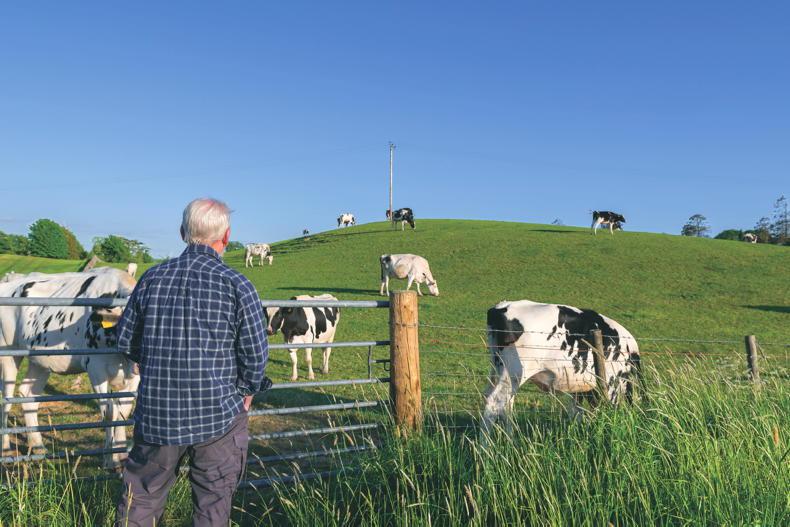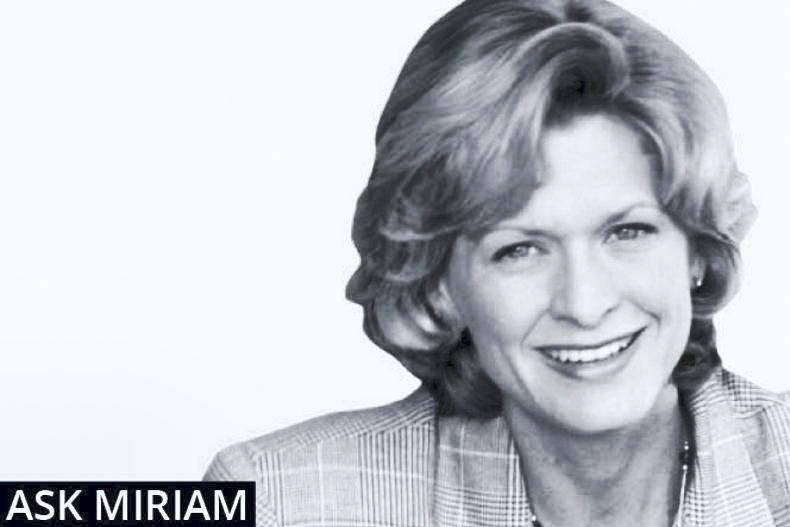The turn of the year
Mary Skehill wrote about her childhood memories of the Christmas season in response to the exercise, “The Turn Of The Year.” In this extract, she recalls the excitement of the St Stephen’s night dance.
“My older sisters and brothers went out dancing to the local hall-cum-ballroom dressed up in their finery. I recall the hooped underskirt the girls wore under their dresses to make them stand out. Their hair would be washed and up in curlers since after dinner. The lads’ shirts would be ironed and hung up ready and their shoes polished by us younger ones. ‘Can they not polish their own shoes,’ I asked, jealous that I could not go to the dance.
“A few local boys and girls would call, and they all cycled together to the dance, which was expected to be packed to the doors on St Stephen’s night.
“Next day there would be no sign of the dancers until after 12.00 at least, just tired as there was no drink allowed in the ballrooms then. No unnecessary farm work was arranged for this time. Of course, stock had to be fed and given water, but my father looked after that, glad to get out in the fresh air and away from the hustle and bustle and talk about the night before, which my mother delighted in.
Pony and trap
“If the weather was fairly good in the afternoon, my father would bring the younger children to visit his sister and her family. He would yoke up the little black pony and trap, making sure that the carriage lamp that was attached to the trap had oil in it as it would surely be dark on our journey home. Our mother made sure we were dressed warm with a tartan rug over our knees to keep us cosy. She would always send a present, usually a homemade Christmas cake.
“We found that journey so exciting and got a hearty welcome from our aunty and the family. We were delighted to be served a glass of Cidona and biscuits while my father enjoyed a bottle of stout. Later we all sat around the table to a very special tea. On our way home, the moon was out and the stars shining brightly to our delight. We watched out for candles in the windows as we passed; there were no fairy lights then.”
To coincide with St Brigid’s Day, Maureen set readers the challenge of writing about a special woman in their lives. Mary Morrison paid tribute to her mother; in this extract, she recalls her skills as a home-maker and farmer and her irrepressible spirit.
“Mam kept a very clean and tidy house to a high standard, and was a highly skilled cook and baker – a fist of this and a fist of that – no need for a weighing scales! Brown soda bread, currant cake, gingerbread, apple and rhubarb tarts and of course her ‘Kill-me-Quick’, a madeira cake that didn’t last long in our house.
“Self-sufficiency was the ethos of the time– have your own eggs, milk, butter, potatoes, fruit and vegetables. A pig would be killed, and homemade sausages and puddings would be made. Mam was also very skilled at sewing. She could run up a summer dress in no time on her Singer sewing machine.
Unexpected loss
“Sadly, when my father died suddenly while we were making winds of hay, my darling mam had to cope with this sudden and unexpected loss at 50 years of age. The sadness in that field on the July afternoon is an unforgettable memory. It was called the ‘small field’ and its hedgerows were always filled with bright, smiling, yellow primroses and often time I picked them in my youth. But, thereafter, there was always a lingering sadness associated with the primroses.
“As a widow, she persevered with determination and continued to work the farm but always had an air of sadness about her. She still had two daughters to educate and she encouraged us to succeed. She busied herself growing tomatoes in her large greenhouse and selling them to the local shops and reared turkeys for the Christmas market. Once the turkeys had reached the required weight in mid-December, the two of us would pluck them and have them oven-prepared for her numerous orders. This was a precious time as we sat on our stools and chatted as mother and daughter while we worked. She would reminisce on her childhood days, walking barefooted to school, the strict teachers she encountered and the great friendships she cherished and her Aunt Maggie, who was like a second mother to her.
“It was difficult to come to terms with the fact that this great woman would succumb to dementia 40 years later – life seems so unfair! But with organization and a tight family network she was cared for in her own home and shown the respect and love she deserved.”
In March, Maureen urged readers to use a photograph as a prompt for their memoir exercise. Caroline Smiddy submitted this poem called “Photo Time Travel” inspired by all those dealing with dementia in their lives.
Photo Time Travel
My mind is going.
Give me a hint,
Give me a prompt,
Who are you and
What do you want?
A Photo? Photograph?
Look you here now!
I know you are there
And I know you are not real,
So cool down,
just calm down,
Just be quiet and let me be.
I’m sitting here
with Mother and the Boss
and all of us
Of a summer’s day
Oh Boy! The sounds,
The voices and the smell of hay.
Everything is alright.
Just be cool, just be quiet.
Just come with me and
Let me be.
Gearóid Duffy was inspired to take a trip down memory lane to his school days in Co Sligo. In this extract, he recalls the terror of tests; and some lessons learned.
“Throughout my school days I was haunted by spelling tests and the possibility of having to write a composition in class where my mother couldn’t do it for me. My first effort in third class was abysmal. We were to write an essay on dogs. I wrote: ‘God eat rabbit and cat.’ I got my ‘ds’ and ‘gs’ mixed up, and after trying to say that ‘dogs eat rabbits’, I tried to include the after-thought that cats also eat them.
“Prayers, being able to write a letter home to one’s mother, and good manners were priorities. Being able to know that you had received the correct change in a shop, helped to motivate us to do our sums. Grammar was tedious but it had to be learned. It didn’t escape my attention that poets seemed to disregard the rules of grammar. We were told that they had ‘poetic licence’, but it wasn’t clear how to get one!
“We didn’t get far into our history or geography books though they did seem interesting. For religious instruction we had a copybook, into which we could stick cut-out pictures from Christmas cards, etc. and write important things, such as prayers, the Ten Commandments etc.
“The first time I remember receiving appreciation came during sixth-class, when a visiting inspector was so impressed by my general knowledge that he highly commended me in front of everyone. This was not lost on the teacher, Ms Toolan.
“Some weeks afterwards she was clearly agitated as she searched beneath her desk; a mouse [or some similar furry rodent] had made his way into the boxes of Maltesers that were to be the prizes for those who topped the class in the Christmas tests. There was however one box of sweets of a different variety which had escaped being gnawed. This, the teacher explained, had been got for me, following the cigire’s visit, and with a sigh of resignation, it was passed to me.”
The Giant’s Grave
Betty Gleeson recalled “The Giant’s Grave” near her home in Co Monaghan. As a child, she could never understand the lure of what appeared to be “a place of stones”.
“When walking to school in the 1950s, we gave directions to strangers on how to get there. The visitors were smart young men and ladies dressed in twin sets and long tweed skirts, fashionable at that time. They parked their car and walked in along the lane.
“It was a relatively quiet road. The only bus service to Monaghan town ran on a Saturday. On school days, the occasional GNR lorry and Master Gallagher’s blue Volkswagen car was the main transport on the road. And so, to see the odd parked car at the end of ‘the lane’ and a few people walking purposefully to visit what was known to us as ‘The Giant’s Grave’ was a wonder to us children. Why would anyone want to visit just an old pile of stones!”
Years later, however, she was inspired to re-visit the site with her sister.
“Walking in to Tyredigan down the familiar lane of our childhood, the summer’s day smell of honeysuckle, brought us right back to our school days. At Tyredigan a new sign stated ‘Court Cairn, Tyredigan’ with an arrow pointing to the gate entrance. Through the gate we went and then we negotiated entrance to the ‘Grave’ by climbing under a loose barbed wire fence.
“It was as we remembered it, with an OPW monument fógra, indistinct but nevertheless urging visitors not to disturb the site. We walked around the elevated site and tried to make sense of the scattered stones, now that we were in possession of more information. Ordnance Surveys carried out by the relative professionals including Ruaidhri de Valera describes the site as follows:
“‘Cairnbaine, also called Tyredigan Court Tomb [the oldest kind of megalithic monument] is a dual court tomb. The gallery is exposed and one roof slab is in place. In front of the gallery are court stones and the remains of a façade. The cairn itself is trapezoidal and measures 30m [98ft] long and 15m [49ft] wide.’
“Old bushes and briars on the perimeter of the site had given years clawing their way over and around the historic stones. We tried to visualise what this court tomb was like in its original form and just who was the giant that was laid to rest here. It took us a lifetime and a chance outing for us to come back to this historic place- a place of stones.”
NEXT:
Maureen Boyle
will return to Irish
Country Living later this
month with more
writing inspiration.
Read more
Memoir: using an old photograph as a writing prompt
Memoir: unlocking memories through the senses
The turn of the year
Mary Skehill wrote about her childhood memories of the Christmas season in response to the exercise, “The Turn Of The Year.” In this extract, she recalls the excitement of the St Stephen’s night dance.
“My older sisters and brothers went out dancing to the local hall-cum-ballroom dressed up in their finery. I recall the hooped underskirt the girls wore under their dresses to make them stand out. Their hair would be washed and up in curlers since after dinner. The lads’ shirts would be ironed and hung up ready and their shoes polished by us younger ones. ‘Can they not polish their own shoes,’ I asked, jealous that I could not go to the dance.
“A few local boys and girls would call, and they all cycled together to the dance, which was expected to be packed to the doors on St Stephen’s night.
“Next day there would be no sign of the dancers until after 12.00 at least, just tired as there was no drink allowed in the ballrooms then. No unnecessary farm work was arranged for this time. Of course, stock had to be fed and given water, but my father looked after that, glad to get out in the fresh air and away from the hustle and bustle and talk about the night before, which my mother delighted in.
Pony and trap
“If the weather was fairly good in the afternoon, my father would bring the younger children to visit his sister and her family. He would yoke up the little black pony and trap, making sure that the carriage lamp that was attached to the trap had oil in it as it would surely be dark on our journey home. Our mother made sure we were dressed warm with a tartan rug over our knees to keep us cosy. She would always send a present, usually a homemade Christmas cake.
“We found that journey so exciting and got a hearty welcome from our aunty and the family. We were delighted to be served a glass of Cidona and biscuits while my father enjoyed a bottle of stout. Later we all sat around the table to a very special tea. On our way home, the moon was out and the stars shining brightly to our delight. We watched out for candles in the windows as we passed; there were no fairy lights then.”
To coincide with St Brigid’s Day, Maureen set readers the challenge of writing about a special woman in their lives. Mary Morrison paid tribute to her mother; in this extract, she recalls her skills as a home-maker and farmer and her irrepressible spirit.
“Mam kept a very clean and tidy house to a high standard, and was a highly skilled cook and baker – a fist of this and a fist of that – no need for a weighing scales! Brown soda bread, currant cake, gingerbread, apple and rhubarb tarts and of course her ‘Kill-me-Quick’, a madeira cake that didn’t last long in our house.
“Self-sufficiency was the ethos of the time– have your own eggs, milk, butter, potatoes, fruit and vegetables. A pig would be killed, and homemade sausages and puddings would be made. Mam was also very skilled at sewing. She could run up a summer dress in no time on her Singer sewing machine.
Unexpected loss
“Sadly, when my father died suddenly while we were making winds of hay, my darling mam had to cope with this sudden and unexpected loss at 50 years of age. The sadness in that field on the July afternoon is an unforgettable memory. It was called the ‘small field’ and its hedgerows were always filled with bright, smiling, yellow primroses and often time I picked them in my youth. But, thereafter, there was always a lingering sadness associated with the primroses.
“As a widow, she persevered with determination and continued to work the farm but always had an air of sadness about her. She still had two daughters to educate and she encouraged us to succeed. She busied herself growing tomatoes in her large greenhouse and selling them to the local shops and reared turkeys for the Christmas market. Once the turkeys had reached the required weight in mid-December, the two of us would pluck them and have them oven-prepared for her numerous orders. This was a precious time as we sat on our stools and chatted as mother and daughter while we worked. She would reminisce on her childhood days, walking barefooted to school, the strict teachers she encountered and the great friendships she cherished and her Aunt Maggie, who was like a second mother to her.
“It was difficult to come to terms with the fact that this great woman would succumb to dementia 40 years later – life seems so unfair! But with organization and a tight family network she was cared for in her own home and shown the respect and love she deserved.”
In March, Maureen urged readers to use a photograph as a prompt for their memoir exercise. Caroline Smiddy submitted this poem called “Photo Time Travel” inspired by all those dealing with dementia in their lives.
Photo Time Travel
My mind is going.
Give me a hint,
Give me a prompt,
Who are you and
What do you want?
A Photo? Photograph?
Look you here now!
I know you are there
And I know you are not real,
So cool down,
just calm down,
Just be quiet and let me be.
I’m sitting here
with Mother and the Boss
and all of us
Of a summer’s day
Oh Boy! The sounds,
The voices and the smell of hay.
Everything is alright.
Just be cool, just be quiet.
Just come with me and
Let me be.
Gearóid Duffy was inspired to take a trip down memory lane to his school days in Co Sligo. In this extract, he recalls the terror of tests; and some lessons learned.
“Throughout my school days I was haunted by spelling tests and the possibility of having to write a composition in class where my mother couldn’t do it for me. My first effort in third class was abysmal. We were to write an essay on dogs. I wrote: ‘God eat rabbit and cat.’ I got my ‘ds’ and ‘gs’ mixed up, and after trying to say that ‘dogs eat rabbits’, I tried to include the after-thought that cats also eat them.
“Prayers, being able to write a letter home to one’s mother, and good manners were priorities. Being able to know that you had received the correct change in a shop, helped to motivate us to do our sums. Grammar was tedious but it had to be learned. It didn’t escape my attention that poets seemed to disregard the rules of grammar. We were told that they had ‘poetic licence’, but it wasn’t clear how to get one!
“We didn’t get far into our history or geography books though they did seem interesting. For religious instruction we had a copybook, into which we could stick cut-out pictures from Christmas cards, etc. and write important things, such as prayers, the Ten Commandments etc.
“The first time I remember receiving appreciation came during sixth-class, when a visiting inspector was so impressed by my general knowledge that he highly commended me in front of everyone. This was not lost on the teacher, Ms Toolan.
“Some weeks afterwards she was clearly agitated as she searched beneath her desk; a mouse [or some similar furry rodent] had made his way into the boxes of Maltesers that were to be the prizes for those who topped the class in the Christmas tests. There was however one box of sweets of a different variety which had escaped being gnawed. This, the teacher explained, had been got for me, following the cigire’s visit, and with a sigh of resignation, it was passed to me.”
The Giant’s Grave
Betty Gleeson recalled “The Giant’s Grave” near her home in Co Monaghan. As a child, she could never understand the lure of what appeared to be “a place of stones”.
“When walking to school in the 1950s, we gave directions to strangers on how to get there. The visitors were smart young men and ladies dressed in twin sets and long tweed skirts, fashionable at that time. They parked their car and walked in along the lane.
“It was a relatively quiet road. The only bus service to Monaghan town ran on a Saturday. On school days, the occasional GNR lorry and Master Gallagher’s blue Volkswagen car was the main transport on the road. And so, to see the odd parked car at the end of ‘the lane’ and a few people walking purposefully to visit what was known to us as ‘The Giant’s Grave’ was a wonder to us children. Why would anyone want to visit just an old pile of stones!”
Years later, however, she was inspired to re-visit the site with her sister.
“Walking in to Tyredigan down the familiar lane of our childhood, the summer’s day smell of honeysuckle, brought us right back to our school days. At Tyredigan a new sign stated ‘Court Cairn, Tyredigan’ with an arrow pointing to the gate entrance. Through the gate we went and then we negotiated entrance to the ‘Grave’ by climbing under a loose barbed wire fence.
“It was as we remembered it, with an OPW monument fógra, indistinct but nevertheless urging visitors not to disturb the site. We walked around the elevated site and tried to make sense of the scattered stones, now that we were in possession of more information. Ordnance Surveys carried out by the relative professionals including Ruaidhri de Valera describes the site as follows:
“‘Cairnbaine, also called Tyredigan Court Tomb [the oldest kind of megalithic monument] is a dual court tomb. The gallery is exposed and one roof slab is in place. In front of the gallery are court stones and the remains of a façade. The cairn itself is trapezoidal and measures 30m [98ft] long and 15m [49ft] wide.’
“Old bushes and briars on the perimeter of the site had given years clawing their way over and around the historic stones. We tried to visualise what this court tomb was like in its original form and just who was the giant that was laid to rest here. It took us a lifetime and a chance outing for us to come back to this historic place- a place of stones.”
NEXT:
Maureen Boyle
will return to Irish
Country Living later this
month with more
writing inspiration.
Read more
Memoir: using an old photograph as a writing prompt
Memoir: unlocking memories through the senses









SHARING OPTIONS